Insulating a house is considered one of the top priorities among homeowners. However, some people might still be confused and do not know which part of the house to insulate. If you leave one side without adequate protection, you might run into problems down the line. So, if you are wondering if insulating a porch ceiling is a good idea, let us find out!
Insulating a porch ceiling is a good idea as it offers numerous benefits. If your porch ceiling and the living room ceiling are on a level plane and connected, insulating the porch ceiling is a step you can consider. Additionally, if you have an enclosed porch, a 3-season porch, or a sunroom, you should invest in insulating the porch ceiling. This way, you can have adequate insulation in the winter or summer.
Of course, there is still more to cover on this topic. While insulation might sound like a good idea, some situations will make an insulated ceiling a waste of money. It is essential to find out what applies to you. This way, you do not venture into a pointless cause. If you want to find out more, keep reading ahead.
![A front porch of a traditional home, Should You Insulate A Porch Ceiling? [And How To]](https://hvacseer.com/wp-content/uploads/2021/07/Should-You-Insulate-A-Porch-Ceiling.png)
Why Should You Insulate A Porch Ceiling? - Advantages Of An Insulated Porch
When planning house insulation, the porch ceiling is not the first thing that comes to mind. However, an insulated ceiling has a lot more to offer than one might anticipate.
- The insulated porch ceiling makes the house look finished. Hence, it adds to the overall look of your home.
- A temperature-regulated porch can add value to your home in real estate.
- It prevents the porch from overheating in the summertime.
- Insulation keeps the porch warmer when the winter season arrives.
- Lastly, it makes the area comfortable and hence keeps you connected to the outdoor.
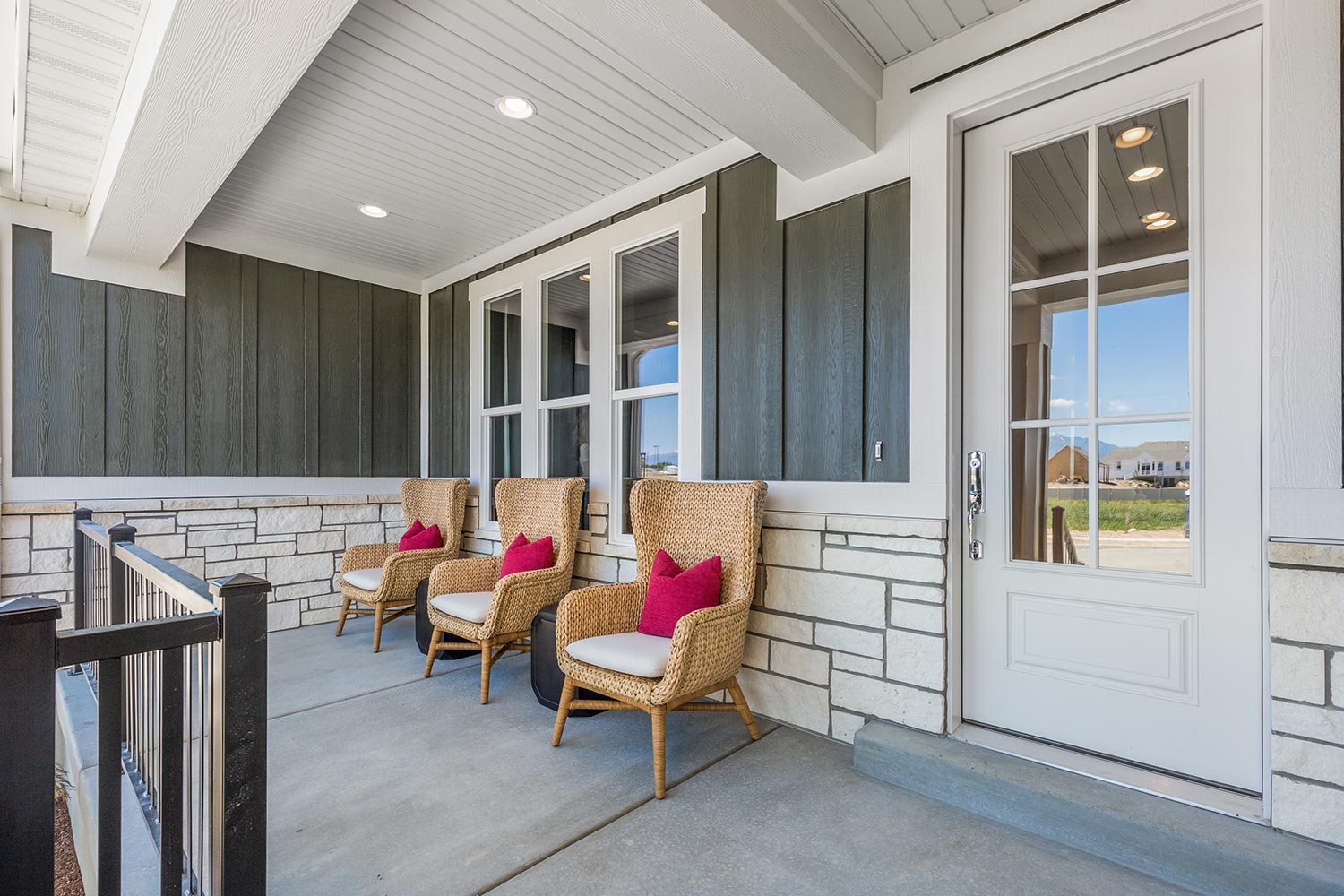
Situations Where Ceiling Insulation Will Not Be Needed
However, if your porch is not enclosed, insulating the ceiling should not be a consideration. Since it lacks walls, your only defense against the weather would be the ceiling. Even if you install heating under the floors, it will not be enough to keep the porch warm in cold weather. So, in the event you have an open area, installing insulation is a pointless cause.
How Do You Insulate A Porch Ceiling?
In terms of insulating porch ceilings, there are multiple different options available in the market. The first step before insulating a porch ceiling or any room of your house should be to check the R-value of your area. R-value is a measurement system that grades different insulation types according to their functionality. In other words, how efficient they are at preventing heat escape.
After you find out the R-value for your climate zone, it is time to choose one of the many types of insulation.
Spray Foam Insulation
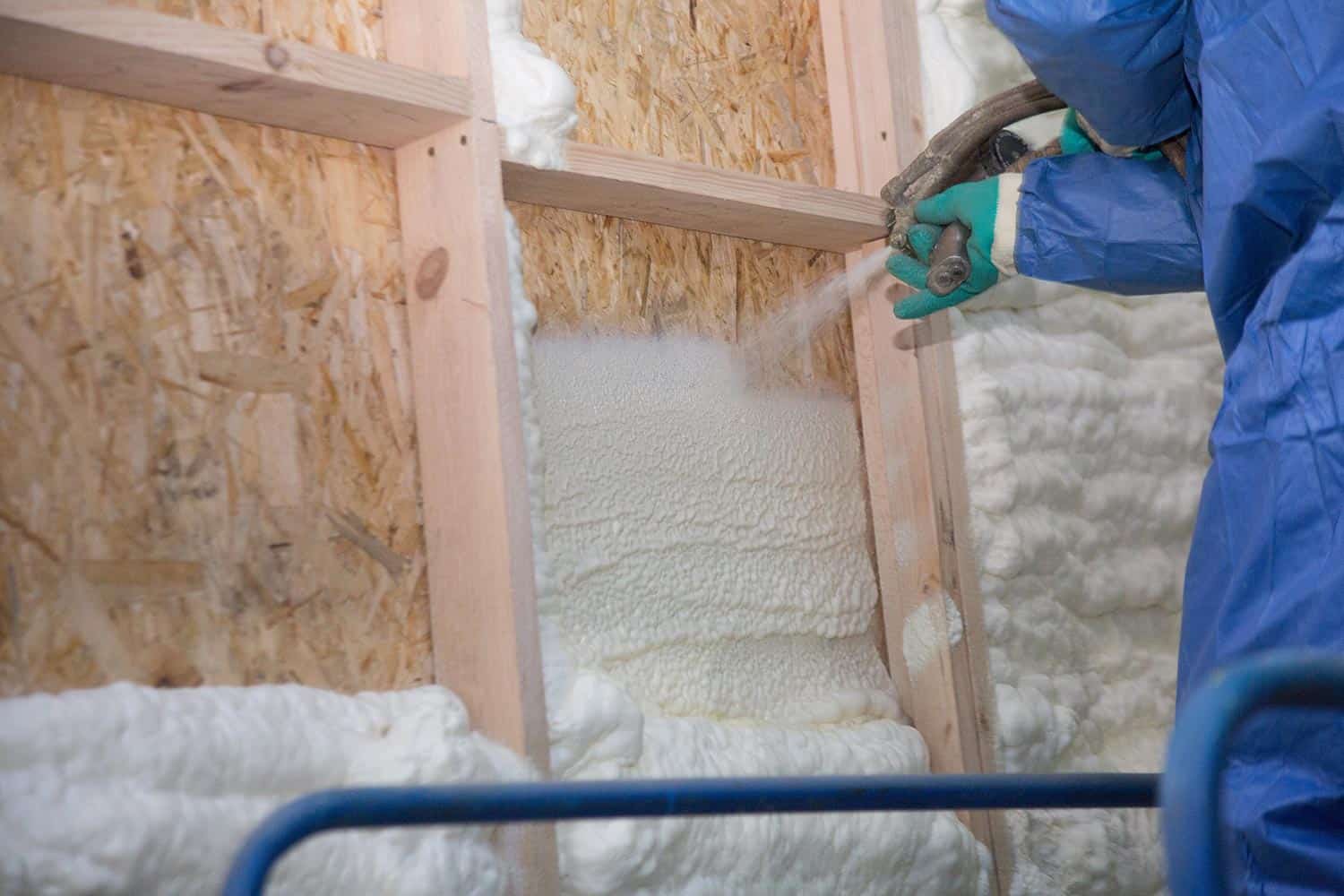
One of the most common ways to insulate your porch ceiling is by using polyurethane spray foam. Polyurethane is a type of plastic. You can spread it to the underside of the porch ceiling. Then it is finished off to prevent moisture from entering the insulant.
Polyurethane is not only eco-friendly. It also reduces utility bills. Additionally, it is also long-lasting and seals off the gaps in the ceiling. It prevents moisture from entering the house.
However, polyurethane spray from insulant is both expensive and difficult to apply. So, if you choose this insulant for your porch ceiling, you would need a contractor.
Rigid Foam Board Insulation
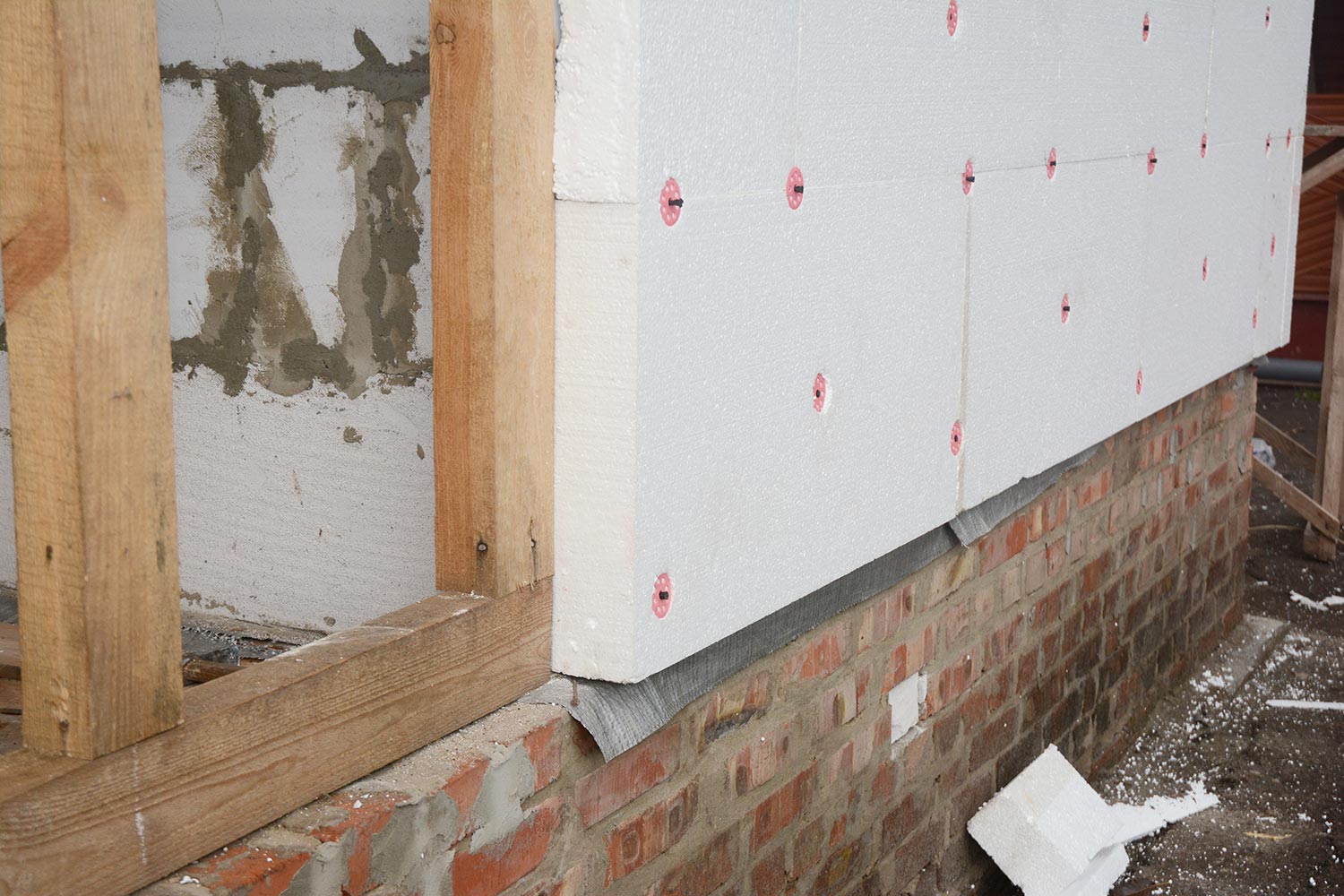
The rigid foam boards are just as they sound. They are boards of insulation made from foam. The name rigid foam board serves as an umbrella term because there are three types of these board insulations.
POLYISO, XPS, and EPS are the types that will become familiar to you. All three work great for insulating the wall, ceiling, and floor of a room. However, POLYISO has the highest R-value and is one of the best options for people living in colder climates. But, with the highest R-value, it means POLYISO is also the most expensive option among the bunch.
In addition to being eco-friendly, rigid foam board insulations are easy to install and do not require professional help. One downside of this insulation type is that the product usually consists of flame retardants.
This chemical indeed makes the insulation fire resistant but can also cause numerous health risks.
Batt Insulation
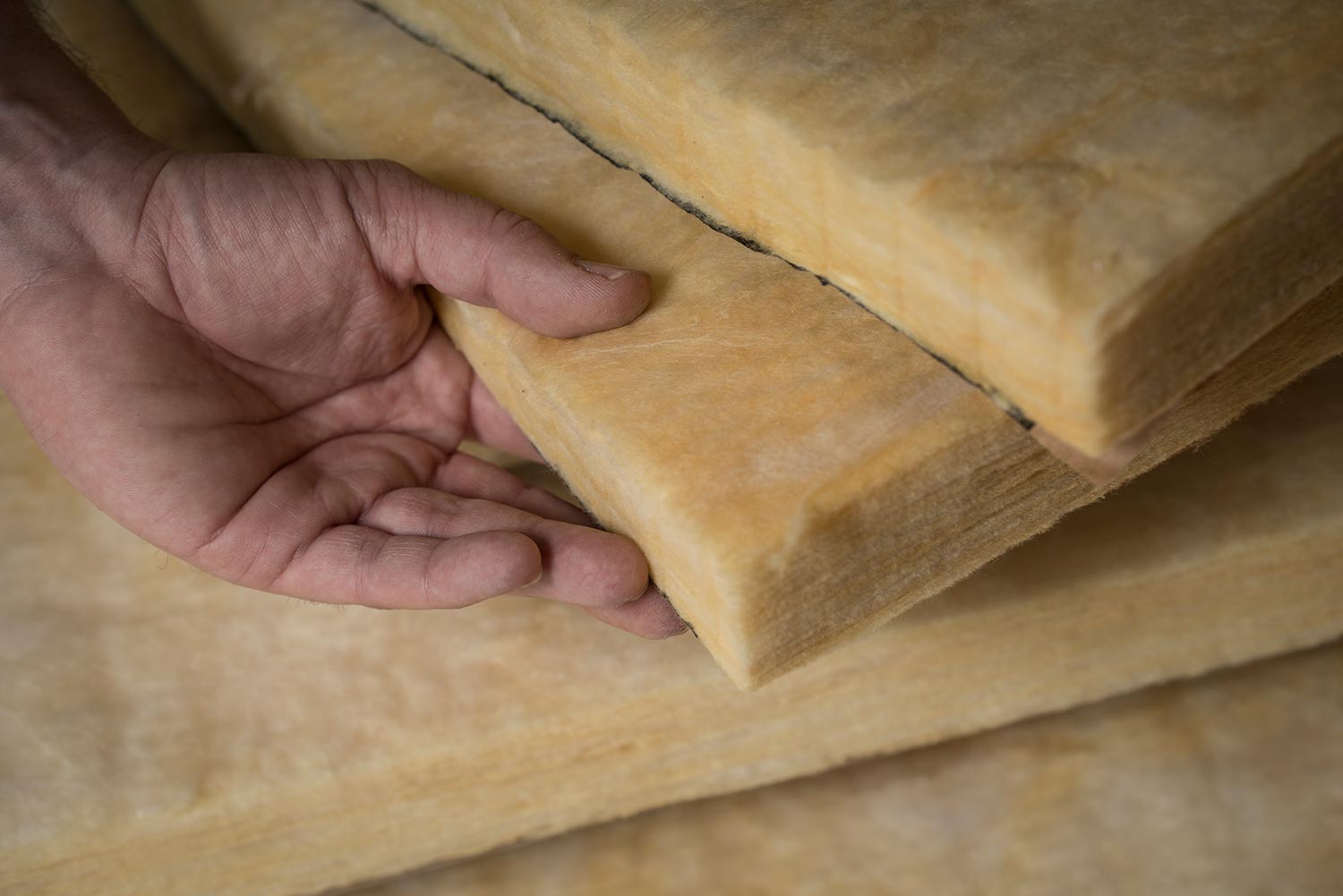
Batt insulations consist of fiberglass. They are making a comeback in the roof insulation area. The batt insulations come in sheets of fiberglass wool and are easy to install. Just cut the pieces as needed and stick them to the ceiling. Another great advantage of batt insulation is that they are moisture-resistant.
It is an option for people living in humid climates. However, batt insulation’s R-value is relatively low. And, it can also cause eye and lung irritation. So, if you decide to use this type of insulation in your porch ceiling, make sure your eyes, mouth, and nose are covered.
Structural Insulated Panels
The last option on this insulation type list is the structural insulated panels. These panels consist of foam and prefabricated boards. Structural insulated panels are durable and can even carry 10 pounds of weight.
As these panels are sensitive to humidity, they work great in low humidity areas. Also, due to the structural rigidness and heaviness, the structural insulated panels are hard to install and may require you to seek professional help.
What Is The Best Insulation For A Ceiling?
The best insulation for a ceiling depends on few factors.
Climate or R-Value
R-value is the grade given to insulation that shows how effective the insulation is. The higher the R-value, the better the insulation is. Any insulation with an R-value between 3.5 to 5.0 is considered well for most climates. However, if you live in a colder area, select an insulation type with a high R-value.
For example, POLYISO, a variation of rigid foam board insulation, holds an R-value of 6.5-6.8 per inch. This insulation will keep the house warm and prevent any heat from escaping.
Humidity
Some insulation materials such as batt insulation are moisture resistant. So, insulation types like batt insulation will work great for high-humidity climates.
Cost
While installing insulation might seem like a good idea, you have to factor in the costs of doing it. The type of insulation is not the only factor in regards to your wallet. You also have to consider seeking professional help to install it.
If you want to lower your insulation cost, then consider doing a DIY insulation installation. The cost of the insulation may also vary depending on the R-value.
The size of the project, the conditions, and the finish you choose will influence how much of a dent will be in your wallet. In general, it can range from $600-1100.
With all of that said, rigid foam boards are one of the best insulation for porch ceilings. It has a higher R-value, is eco-friendly, and saves utility bills. However, it is not easy to install on your own. With the proper safety equipment, you can DIY it.
Can I Install Insulation Myself?

Yes, you can install insulation on your porch ceiling yourself. Installing insulation on your porch ceiling or anywhere else in the house is cost-effective. But, it depends on a few factors, for example, the type of insulating material you use.
Some insulations like spray foam insulation are easy to install by yourself. But if you have decided to get structural insulated panels, it is safer to let a professional help you.
Another factor to take into consideration is the size of the installation site. If you have a huge porch, then installing the insulation by yourself can be tiresome and time-consuming.
However, if you insist on installing the insulation yourself, others recommend getting the following safety pieces of equipment.
- Well-fitted protective eyewear
- Dust mask or respirator (in case of fiberglass insulation)
- Heavy-duty gloves
- Hat or cap
Should A Sunroom Ceiling Be Insulated?
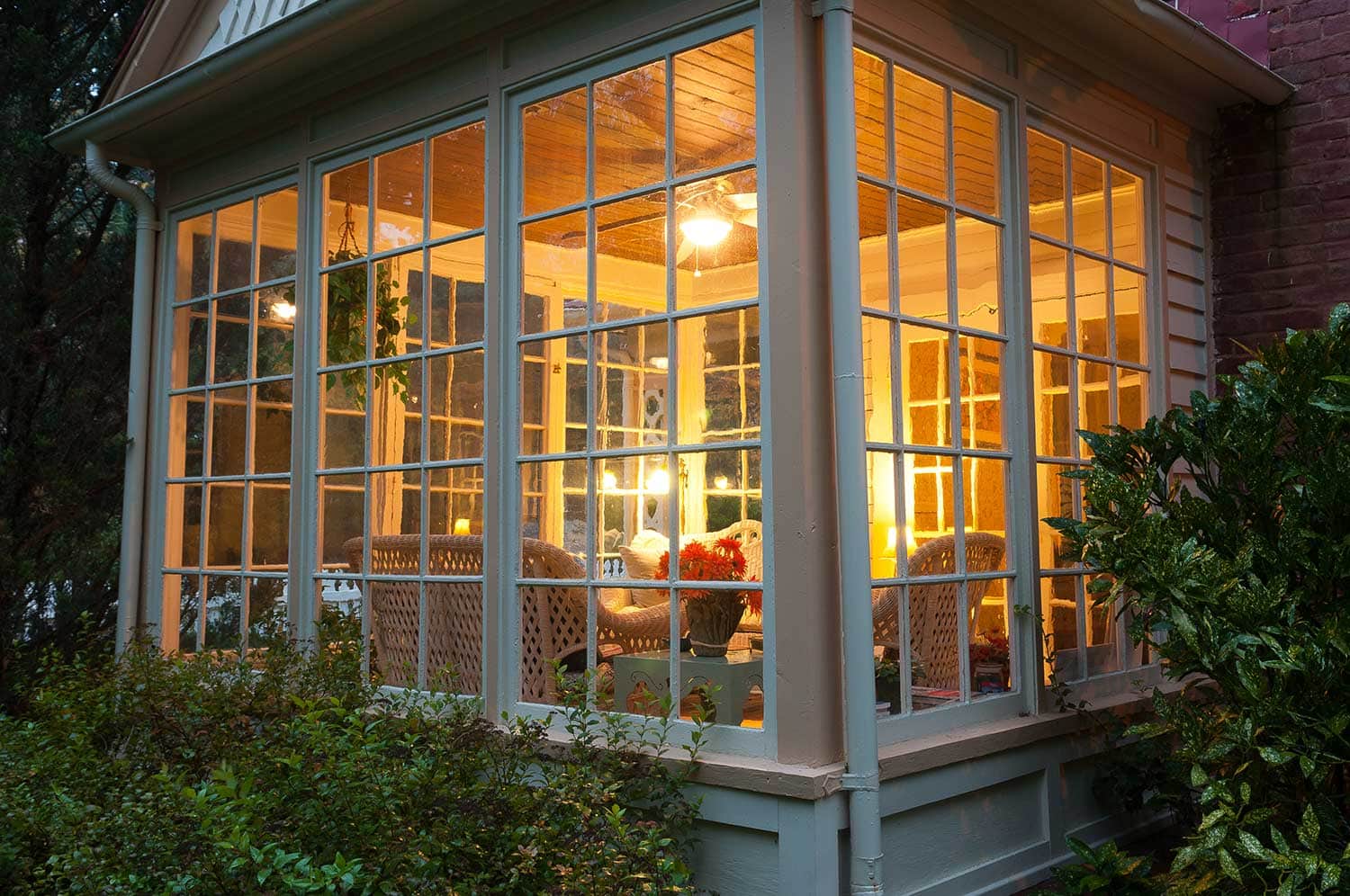
If you do not know it already, a sunroom is a type of room that faces the sun directly in summer. However, in wintertime, sunrooms tend to get colder and hence are not used that often. This situation is where an insulated ceiling and wall can help you. Though, it will not always work out in the best way possible.
Insulation of the sunroom’s ceiling, wall, and floor will prevent the heat from escaping. If you provide the room with adequate insulation, it is warm even in the winter season. Furthermore, an insulated sunroom ceiling can prevent the room from overheating in the summer. So, it is a win-win situation.
How Do You Insulate An Enclosed Porch Ceiling Or Sunroom?
Insulating an enclosed porch ceiling can make the whole area warm and more welcoming. If you have decided to install insulation on your enclosed porch or sunroom, you can either hire a contractor or do the job yourself.
For people who are looking for DIY porch ceiling insulation, the following are the steps to follow.
- First, use a vapor barrier to prevent the moisture from penetrating the walls.
- Cut the insulation to fit the ceiling.
- Layer the insulation on the ceiling. If you are using a rigid foam insulation board, make sure the silver side of the insulation is facing the ceiling.
- After you fix the insulation in the place, check for any bare spots. If any area small area lacks insulating material, spray the spray foam insulation for better insulation.
If you have chosen to use the spray foam insulation for the entire ceiling, then after applying the vapor barrier, spray the insulation directly. Let the insulation dry before you finish the project.
Final Takeaway
Insulation is the first step to getting control over the temperature in an area. However, it is worth determining if the cause is a worthy one. This way, you do not end up with a trivial project. We hope you found the information above insightful.
Before you go, do you have other insulation concerns? Perhaps you are wondering if a basement ceiling needs insulation? We have the answer! For more information, check out our post here.
What about your garage? Do you have problems regulating temperature there? An insulated garage ceiling might be able to help. If you want to find out more, check out our post here.
